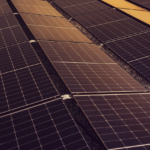Buying a diamond is a huge purchase.
You can’t exactly walk into your local diamond shop and say “I’d like to buy a diamond, but I’m not sure what to get.” You’re ripe for the picking by the diamond salesperson at that point. If you do a bit of research beforehand, you’ll be able to confidently talk shop and choose the right diamond for you.
Today, we’re going to help you with that research. This article is your guide for buying a diamond because not that many people know anything about cuts, carats, or color. Don’t go into this process blind, you won’t see the perfect diamond staring you right in the face.
Carat Weight
It’s important to know what the carat weight of the diamond is because that’s going to have the largest effect on the price. When considering the size of the diamond, you have to think about what it’s for and how much money you’re willing to spend.
If it’s an engagement ring, you’ll want a larger carat weight than what you’d get in an earring. Necklaces would be in the same carat ballpark as rings but could be even larger. The average diamond weight for a ring is between 1-2 carats.
The Diamond’s Shape
The two most popular diamond shapes are round and princess cut. Coincidentally, they’re also the most expensive, but you can also get oval and square variations of those shapes at a better price point.
Learning about different diamond cuts will help you when you go into the store. If you’re buying the diamond for someone, it can be tough to know what to get cause it ultimately comes down to personal preference.
Cut Quality
The cut quality of the diamond has more effect on how much money it costs. Cut quality refers to how the diamond is cut and polished, its symmetry, its depth, and brilliance. A diamond with high cut quality will be brilliant and reflective, while one with low cut quality will look dull.
Different labs have a different cut quality grading system, so pay attention to whether your diamond is graded by AGS or GIA.
Clarity
Clarity comes down to how clean the diamond looks. The fewer blemishes that the diamond has, the higher its clarity rating will be. Clarity does impact the value of the diamond, but it’s rare to actually detect any blemishes with the naked eye.
For that reason, the best thing to do is just give it the eye test. If it looks clean to you, then it’s probably good enough and you don’t need to spend more money on a diamond with a higher clarity rating.
Color
The highest quality diamonds will be completely devoid of color, while some will have a yellow tint to them. There’s a letter grading system that diamond experts use to denote the color of the diamond, ranging from “D” to “Z”.
A completely colorless diamond will be given a “D” color grade and each subsequent letter means that the diamond has slightly more color to it. Typically, the diamonds that you find in jewelry only go up to an “M” color, which will be noticeably yellow.
While the color does affect the price of the diamond, you can be somewhat subjective here as well. If you feel like the diamond looks colorless and the letter system corroborates that, then it’s probably just fine.
Buying a Diamond Is a Big Deal
Unless you’re made of money, buying a diamond for yourself or someone else is going to take a lot of time and consideration. You don’t want to rush into a purchase that you can’t afford, but you also don’t want to spend a lot of money on a diamond that’s just not worth it.
Take your time and do as much research on the kind of diamond that you want before you start shopping. This way, you’ll be able to make the best decision for you and your bank account.
Did you find this post helpful? Come back and visit us again for more products, health, and business news.




